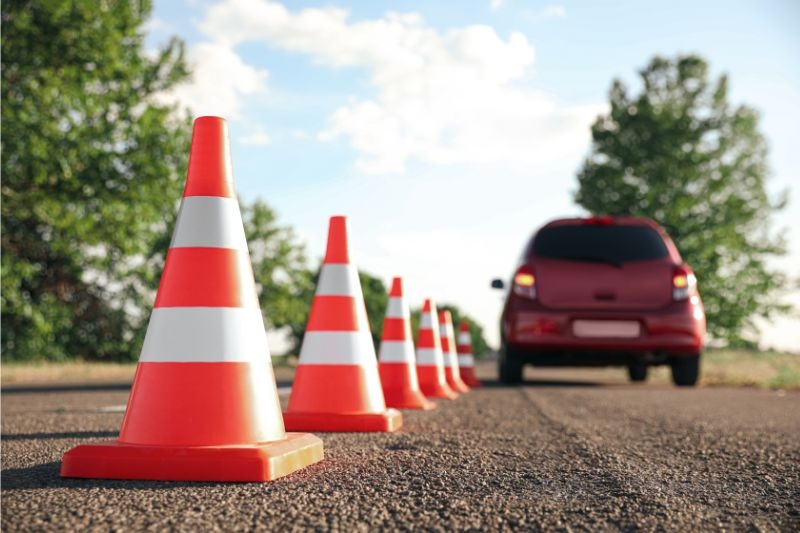Aspiring drivers in the United Kingdom must pass the UK driving license exam to legally operate a vehicle on the road. This comprehensive exam assesses both theoretical knowledge and practical driving skills. In this article, We will guide you through the step-by-step process of mastering the road and successfully passing the UK driving license exam.
Understanding the requirements for the UK driving license
Before embarking on your journey to obtain a UK driving license, it is crucial to understand the requirements set forth by the Driver and Vehicle Standards Agency (DVSA). To be eligible for the exam, you must be at least 17 years old and hold a valid provisional driving license. Additionally, you must meet the minimum eyesight requirements and disclose any medical conditions that may affect your ability to drive safely.
Step 1: Getting familiar with the Highway Code
The Highway Code is a vital resource that provides the rules and regulations for driving on UK roads. It covers various aspects such as traffic signs, road markings, and general road safety guidelines. Familiarizing yourself with the Highway Code is an essential first step towards passing the UK driving license exam.
To get started, obtain a copy of the latest edition of the Highway Code. Read through it thoroughly, paying close attention to the rules and regulations specific to the UK. Take notes and highlight important information to aid in your understanding. Additionally, consider taking online quizzes and practice tests to test your knowledge and reinforce your learning.
Step 2: Preparing for the theory test
The theory test is a crucial component of the UK driving license exam. It assesses your knowledge of the Highway Code, traffic signs, and various driving scenarios. To prepare for the theory test, utilize resources such as practice theory test books, online mock tests, and smartphone apps specifically designed for this purpose.
Allocate dedicated study time each day to revise the material. Focus on understanding the concepts rather than memorizing answers. Take advantage of the practice tests to identify areas where you need improvement and revisit those sections. Remember to stay updated with any changes in the Highway Code, as the theory test may include questions based on recent updates.
Step 3: Practicing hazard perception
Developing strong hazard perception skills is crucial for safe driving on UK roads. The hazard perception test is part of the theory test and evaluates your ability to identify potential dangers on the road. To excel in this test, practice regularly using hazard perception videos and online simulations.
When practicing, pay attention to potential hazards such as pedestrians, cyclists, and other vehicles. Train your eyes to scan the road ahead and anticipate potential risks. Practice reacting appropriately by clicking the mouse or touchscreen at the right time when you spot a hazard. The more you practice, the better you will become at identifying and responding to hazards effectively.
Step 4: Learning to drive with a qualified instructor
Learning to drive with a qualified instructor is an essential step towards becoming a skilled and confident driver. Find a reputable driving school or instructor who can guide you through the process. They will provide you with structured lessons and practical training to develop your driving skills.
During your driving lessons, focus on mastering various driving maneuvers, understanding road signs and markings, and developing defensive driving techniques. Ask your instructor for feedback and areas for improvement after each lesson. Practice regularly outside of your lessons, preferably with a licensed driver accompanying you, to gain more experience and confidence behind the wheel.
Step 5: Preparing for the practical driving test
The practical driving test is the final hurdle to obtaining your UK driving license. It evaluates your ability to apply the knowledge and skills you have acquired during your training. To increase your chances of success, practice regularly and thoroughly prepare for the test.
Revisit the Highway Code and familiarize yourself with the test routes in your area. Practice driving in various weather conditions, on different types of roads, and during different times of the day. Take mock practical driving tests to simulate the exam experience and identify areas that need improvement. Remember to practice both the driving maneuvers and general driving techniques to ensure a well-rounded preparation.
Common mistakes to avoid during the practical driving test
The practical driving test can be nerve-wracking, and it’s essential to stay calm and focused. Here are some common mistakes to avoid:
- Failing to check mirrors and blind spots before changing lanes or making turns.
- Exceeding the speed limit or driving too slowly, disrupting the flow of traffic.
- Failing to anticipate and respond to potential hazards promptly.
- Making errors in parking, such as not aligning the vehicle correctly or forgetting to apply the handbrake.
- Ignoring road signs and markings, including traffic lights and pedestrian crossings.
Be mindful of these mistakes and focus on maintaining a safe and confident driving style throughout the test.
Tips for staying calm and confident during the exam
Nervousness is natural during the driving test, but it’s important to stay calm and composed. Here are some tips to help you stay confident:
- Practice relaxation techniques such as deep breathing and visualization before the test.
- Arrive early at the test center to familiarize yourself with the surroundings and minimize any last-minute rush.
- Focus on the task at hand and avoid getting distracted by external factors or the examiner’s presence.
- Remember that mistakes happen, and it’s crucial to stay composed and continue driving safely.
- Stay positive and believe in your abilities. Remind yourself that you have prepared thoroughly and are ready for the exam.
Resources and additional support for passing the UK driving license exam
To enhance your preparation for the UK driving license exam, consider utilizing the following resources:
- DVSA official publications, including the Highway Code and theory test books.
- Online platforms offering mock tests and hazard perception simulations.
- Driving schools and qualified instructors who provide structured lessons and practical training.
- Online forums and communities where you can seek advice and share experiences with fellow learners.
- DVSA-approved apps and online learning platforms that offer interactive learning materials and practice tests.
Make the most of these resources to enhance your knowledge and skills, and increase your chances of passing the UK driving license exam.
Conclusion
Obtaining a UK driving license requires dedication, knowledge, and practice. By following this step-by-step guide, you can master the road and successfully pass the UK driving license exam. Remember to familiarize yourself with the Highway Code, prepare thoroughly for the theory test and hazard perception, learn from a qualified instructor, and practice consistently. Stay calm and confident during the practical driving test, avoid common mistakes, and utilize available resources for additional support. With determination and perseverance, you can achieve your goal of becoming a licensed driver in the UK.





